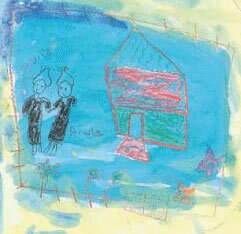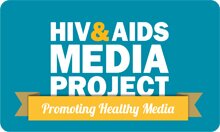Guiding principles for reporting on children
Following up on the challenge for absolute rigour and sensitivity in reporting on children, Part 4 provides five guiding principles to both safe-guard children and enhance reporting.

Ethical guidelines for journalists:
Children are afforded special protection by a number of international conventions and national laws (see the Resources section for more information).
Journalists have a responsibility to be constantly aware of the need to protect children and to enhance their rights, and in practice, adhere to the highest ethical principles. These are:
- Seek truth and report it as fully as possible;
- Act independently;
- Minimise harm.
Below are five guiding principles for reporting on children affected by HIV and AIDS:
1. The best interests of the child
"The child's best interests are of paramount importance in every matter concerning the child" (Section 28(2) of the South African Constitution).
All media coverage of children should be assessed to check that reports do not contribute to children's vulnerability and are in the best interests of the children concerned.
2. Highest ethical standards
"In reporting on children, journalists must maintain the highest standards of ethical conduct, excellence, and sensitivity. In particular, children's rights to privacy and dignity should be afforded even greater protection" 13.
This includes:
- Accurate reporting that does not fuel the myths and misconceptions around the epidemic;
- Avoiding stereotypes and words that carry value judgements, such as "sufferer" or "victim";
- Avoiding sensationalising children affected by the epidemic, such as "innocent" babies;
- Using a variety of reliable and authoritative sources.
3. Confidentiality
A child's HIV status must remain confidential, unless the child wants to reveal her / his status, and through informed consent, is made aware of the potential consequences.
Even if the child's caregivers give consent, unless it is demonstrably in the best interests of the child, and unless the child him / herself consents, the child's HIV status should not be revealed.
Great care needs to be exercised in preventing the indirect identification of a child through the naming or photographing of a child's school, home, place of care, or through naming the child and/or the child's caregivers or parents.
If in doubt, leave it out!
Only in cases where there is an overwhelming and demonstrable public interest, should a child's HIV status be revealed.
4. Consider the consequences
Be mindful of the consequences of your story. The children whom you use as sources have to live with the story long after you have moved on 23.
5. Children have the right to be seen and heard
Where possible, journalists should give children the opportunity to express their views and opinions on HIV and AIDS and related matters.
When working with children, children's ages and developmental stages need to be taken into account.
Why should journalists consult children?
- Children bring fresh perspectives to HIV and AIDS stories;
- Children reveal a range of different and unique stories, which contest many of the widely held stereotypes about children;
- Children reflect and highlight varied experiences and views from different economic and cultural backgrounds;
- Children can tell you how they would like to be referenced and identified in news stories (informed consent and ethical practice is critical);
- Children have the right to participate in matters that concern them. As they too are affected by HIV and AIDS, they should be consulted for their views or experiences.
Child #1: I think this child is HIV-positive. He is going to die. If people don't understand his situation they may laugh at him [because he is HIV-positive], but when they know about HIV they will give him support and love. He must be open so he can get help.
Child #2: You mean people who are HIV-positive should talk about it?
Child #1: I am not going to get support easily if I am not open about being HIV-positive. They need to be open so people can help them to cope with the stress.
Child #3: I don't like it. I think they shouldn't show the face. Other people will know now and laugh at him at school.
Child #1: I agree. Why did they decide to take this photo when he was taking the medicine? Why did they decide to take a photo that makes him look so bad? Why must they show this child with the tube in his nose and the medicine? He looks sick and very bad. I really don't like it. They should have taken the tube out and then taken the photo.
(Children commenting on a photograph published in a local newspaper; Empowering Children & the Media project, 2003)






